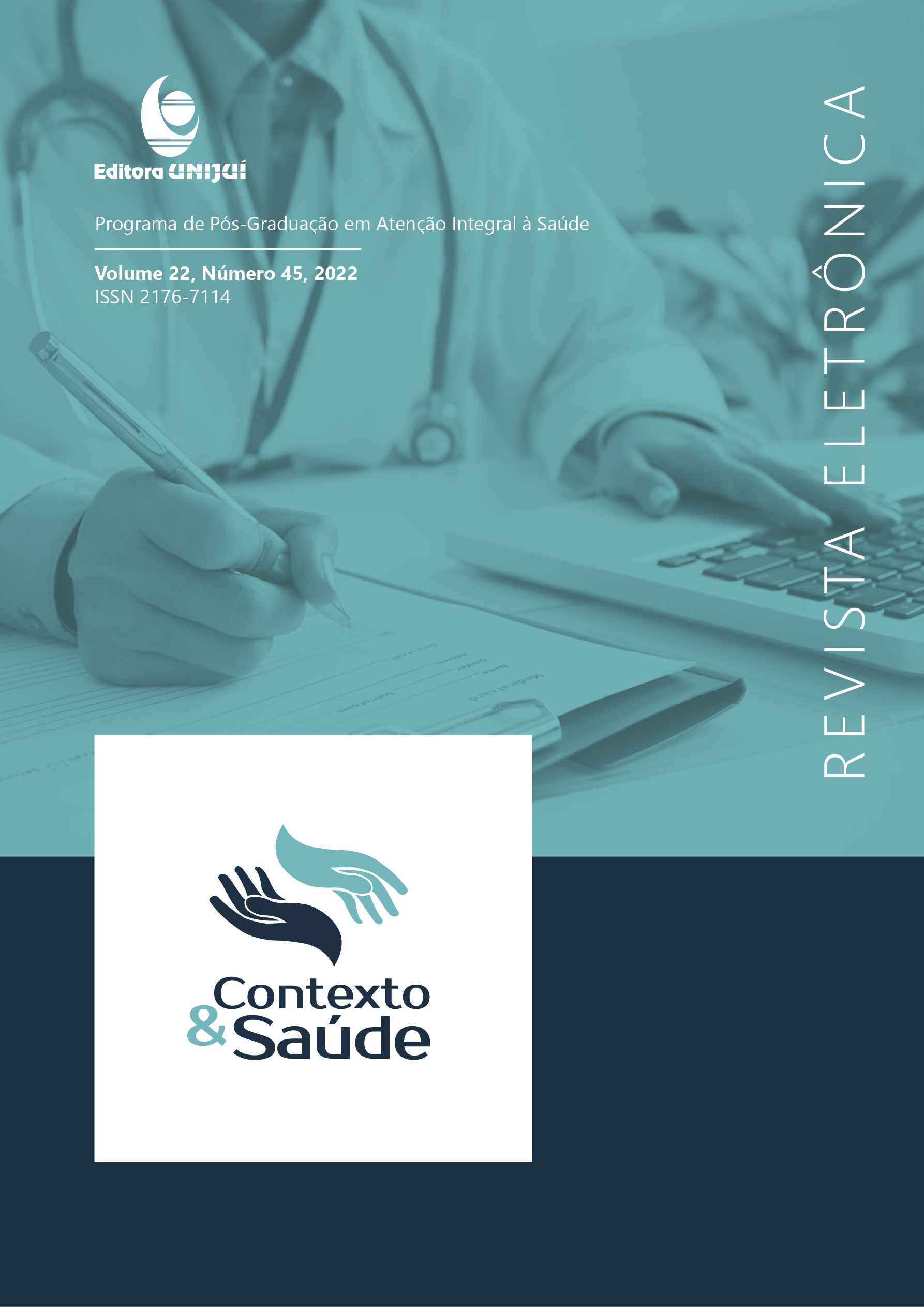Spatial analysis techniques for detecting tuberculosis/HIV coinfection: an integrative review
DOI:
https://doi.org/10.21527/2176-7114.2022.45.10534Keywords:
Tuberculosis. HIV infectioins. Spatial analyses.Abstract
The objective was to analyze the national and international scientific production about the spatial analysis techniques used in the detection of tuberculosis/HIV co-infection in the world. It is an integrative literature review, which used the PICo strategy to elaborate the guiding question: What is the scientific evidence related to the use of spatial analysis techniques in the detection of tuberculosis / HIV co-infection in the world? Searches were conducted in the LILACS, PubMed® and MEDLINE® databases, and in the SciELO electronic library in January 2020, using the descriptors “Tuberculosis (TB) HIV coinfection”, “spatial analysis”, “disease notification”, “risk area”,“ TB / HIV”,“ spatiotemporal ”isolated and / or combined. Articles available in full in Portuguese, English and Spanish were included, excluding dissertations, theses, literature reviews and editorial notes. 16 articles were analyzed, published from 2006 onwards. All used secondary data, with an ecological design. Area data analysis techniques, Bayesian analysis, global and local Moran, scanning statistics, Gaussian geostatic model and Krigagem were used to determine the heterogeneous distribution of the co-infection, with emphasis on the prevalence and mortality coefficients, especially in scenarios such as Brazil and Africa. The diversity of spatial analysis techniques identified, with emphasis on analysis of area data and Bayesian analysis, contributed to assessment and identification of risk factors for indicators of morbidity and mortality to co-infection, targets for action and planning of public health policies, enabling the implementation of actions focused on curative and preventive issues, based on the reduction of socio-spatial inequalities in different scenarios.
Downloads
Published
How to Cite
Issue
Section
License

This work is licensed under a Creative Commons Attribution 4.0 International License.
By publishing in Revista Contexto & Saúde, authors agree to the following terms:
The works are licensed under the Creative Commons Atribuição 4.0 Internacional (CC BY 4.0) license, which allows:
Share — to copy and redistribute the material in any medium or format;
Adapt — to remix, transform, and build upon the material for any purpose, including commercial.
These permissions are irrevocable, provided that the following terms are respected:
Attribution — authors must be properly credited, with a link to the license and indication of any changes made.
No additional restrictions — no legal or technological measures may be applied that restrict the use permitted by the license.
Notes:
The license does not apply to elements in the public domain or covered by legal exceptions.
The license does not grant all rights necessary for specific uses (e.g., image rights, privacy, or moral rights).
The journal is not responsible for opinions expressed in the articles, which are the sole responsibility of the authors. The Editor, with the support of the Editorial Board, reserves the right to suggest or request modifications when necessary.
Only original scientific articles presenting research results of interest that have not been published or simultaneously submitted to another journal with the same objective will be accepted.
Mentions of trademarks or specific products are intended solely for identification purposes, without any promotional association by the authors or the journal.
License Agreement (for articles published from September 2025): Authors retain copyright over their article and grant Revista Contexto & Saúde the right of first publication.

